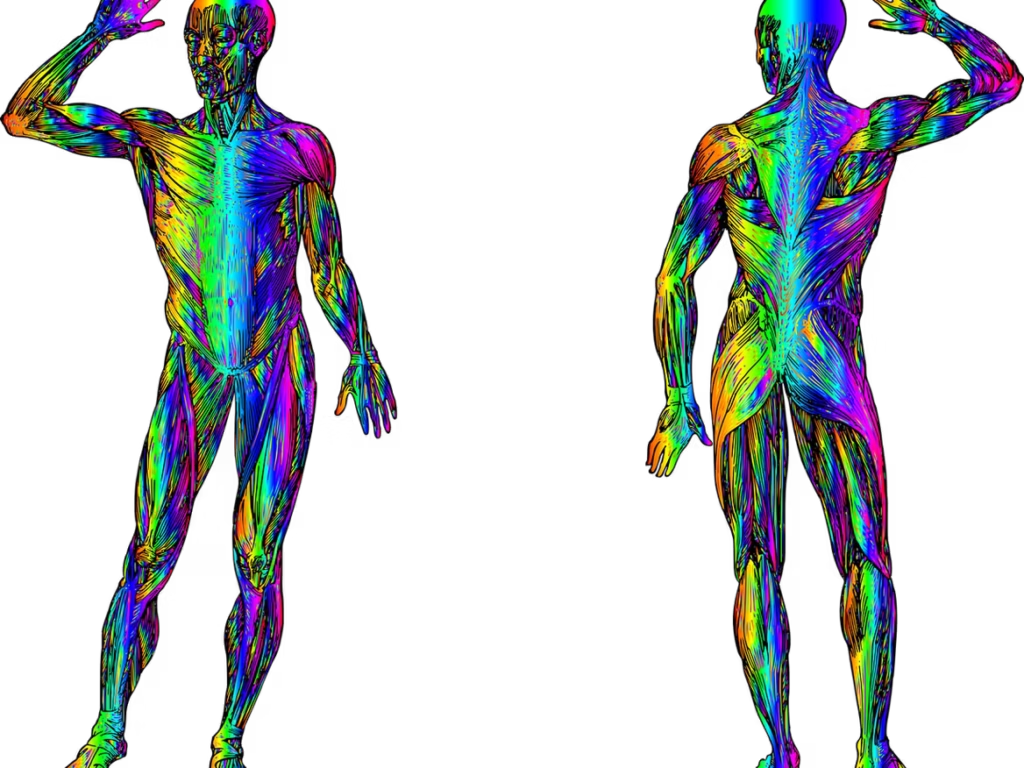
You may be wondering how to effectively address persistent muscle pain and discomfort. Trigger point therapy is a specialized treatment designed to target specific areas of tension within the muscles, known as trigger points. Practitioners offer relief by applying focused pressure to these hyperirritable spots, which often refer pain to other locations. Through this targeted methodology, individuals can experience not only relief from localized discomfort but also improvements in overall muscle function and mobility.
Key Takeaways:
- Trigger point therapy targets specific points of tension in muscles, known as trigger points, which can lead to chronic pain and discomfort when activated.
- Developed from the research of Dr. Janet Travell and Dr. David Simons, this therapy aims to deactivate hyperirritable muscle nodules and restore overall musculoskeletal harmony.
- The therapy not only alleviates localized pain but also addresses referred pain patterns, promoting enhanced mobility, relaxation, and overall well-being.
Origins of Trigger Point Therapy
While exploring various modalities for addressing musculoskeletal pain, it is important to understand the origins of trigger point therapy. This specialized approach has its roots embedded in the mid-20th century, emerging as a response to the complex nature of myofascial pain syndrome. For those looking to explore deeper into this subject, they can visit What is Trigger Point Therapy?, where comprehensive information is provided. Trigger point therapy has gained recognition for its focus on specific points of tension within the muscles, aiming to deactivate painful nodules and restore harmony to the musculoskeletal system.
Historical Background
Historical accounts indicate that the understanding of myofascial pain and trigger points has evolved significantly over time. Initially, muscle pain was often attributed solely to injuries or overexertion. However, a deeper exploration into muscle behavior revealed the presence of hyperirritable spots, which could generate not just localized discomfort but also referred pain in disparate body areas. This understanding laid the groundwork for developing targeted therapy techniques aimed at alleviating chronic pain and muscle dysfunction.
Pioneers of the Field
Along the path to recognizing the impact of trigger points on human health, Dr. Janet Travell and Dr. David Simons were undeniably influential figures. Their pioneering research in the mid-20th century brought critical insights into the concept of trigger points and their role in pain referral patterns. By highlighting the presence of these nodules within muscles, they fostered a greater understanding that has informed therapies and treatment practices in physical medicine and sports therapy.
In fact, their collaborative work not only established the foundational theories underlying trigger point therapy but also paved the way for practitioners to adopt these techniques in clinical practice. Their contributions have led to the widespread application of trigger point therapy in various therapeutic settings, promoting the well-being of individuals suffering from chronic pain and other musculoskeletal conditions. Through continued research and practice, the field of trigger point therapy has evolved, enhancing its credibility and effectiveness in addressing a broad spectrum of health issues.
Understanding Trigger Points
Now, the concept of trigger points is fundamental to the practice of trigger point therapy. These hyperirritable spots can be found within skeletal muscles and are associated with palpable nodules in taut bands of muscle fibers. They can be a source of localized tenderness and generate referred pain in other parts of the body. This interconnectedness is what makes trigger point therapy effective for alleviating discomfort not just at the site of the trigger point, but also in areas that might seem unrelated. For more detailed insight, he or she may refer to Trigger Point Therapy – Manual Therapy – Physiotherapy.
Definition and Characteristics
Against the backdrop of muscle physiology, trigger points are defined as hyperirritable areas within a muscle that can cause significant pain and dysfunction. They are often described as “knots” and can lead to a range of issues, including restricted range of motion and muscle weakness. The distinct characteristics of trigger points involve not only localized pain but also the phenomenon of referred pain, where discomfort is experienced in areas away from the trigger point itself.
Causes and Impact on the Body
Between various factors, the development of trigger points can stem from muscle overuse, injury, poor posture, or even emotional stress. These elements create an environment where muscles become tense and tight, leading to the formation of trigger points. As a result, individuals may experience not only pain but also complications such as decreased flexibility and overall mobility, which can impair daily activities and affect quality of life.
The impact of trigger points extends beyond the physical realm. They can contribute to a cycle of discomfort that affects mental and emotional well-being. The presence of chronic pain associated with trigger points can lead to heightened stress and anxiety, creating a feedback loop that exacerbates muscle tension and triggers further pain. Understanding these dynamics is imperative for those seeking effective management and relief through methods such as trigger point therapy.
Methodology of Trigger Point Therapy
Your understanding of trigger point therapy encompasses a variety of targeted techniques designed to alleviate muscle tension and restore function. This modality goes beyond traditional massage practices by focusing specifically on hyperirritable nodules, or trigger points, within the muscles. Practitioners utilize methods such as sustained pressure, deep tissue massage, and myofascial release to deactivate these trigger points. By applying targeted pressure to specific areas, they facilitate the release of muscle tension and improve blood circulation, contributing to a reduction in discomfort and an enhancement of overall mobility.
Techniques Used in Treatment
Before initiating a session, the practitioner typically conducts a thorough assessment to identify the areas of tension and the associated referred pain patterns. This assessment directs the course of treatment, allowing the practitioner to concentrate their efforts on the most problematic trigger points. Techniques such as ischemic compression and sustained stretch are often employed to effectively target these areas, aiming to break the cycle of pain and tension that often plagues individuals experiencing myofascial pain syndrome.
Differentiation from Other Massage Techniques
Along with its specific techniques, trigger point therapy is distinct from conventional massage in its methodology and objectives. Standard massage focuses on relaxation and general muscle ease, employing broad strokes and overall manipulation. In contrast, trigger point therapy centers on the identification and treatment of localized points of tension, which can significantly affect overall muscle function and contribute to pain referred in other areas of the body.
While practitioners of traditional massage seek to provide relaxation and stress relief, those who specialize in trigger point therapy aim to penetrate deeper into the muscle tissue to address the root causes of pain. This focused approach requires a deeper knowledge of anatomy and physiology, as practitioners actively engage with the unique interconnectivity of muscles, fascia, and nerves, facilitating a comprehensive path to recovery and pain management.
Mechanisms of Pain Referral
Explanation of Referred Pain
For many individuals suffering from myofascial pain syndrome, the complexity of referred pain can be perplexing. Between the initial trigger point and the location where pain is perceived, there exists an intricate relationship that often leads to discomfort in seemingly unrelated areas of the body. This phenomenon occurs when hyperirritable nodules, known as trigger points, send pain signals along neural pathways, causing sensations to manifest far from their original source. Dr. Janet Travell and Dr. David Simons emphasized that understanding this referral pattern is vital for effective pain management and treatment. By addressing the underlying trigger points, practitioners can alleviate not just localized muscle pain but also broader patterns of discomfort that may perplex patients and healthcare providers alike.
Identification of Trigger Points
Any successful treatment of myofascial pain involves a thorough identification of trigger points. Practitioners trained in trigger point therapy employ specific techniques to palpate muscle tissues and locate these tense nodules. This process often requires a keen understanding of anatomy, as well as the ability to recognize patterns of referred pain that can guide the practitioner to the correct trigger point. By applying pressure to various areas of the muscle and observing the patient’s responses, they can pinpoint the source of discomfort with remarkable accuracy.
Identifying trigger points can present challenges, as patients may exhibit a range of sensitivities and pain referral patterns. Often, multiple trigger points can exist within a single muscle group, and the referred pain may complicate the diagnostic process. As practitioners develop their skills in locating these points, they rely on a combination of palpation techniques and patient feedback to navigate the body’s intricate landscape of tension and pain. This methodical approach lays the foundation for effective treatment strategies that not only target the trigger points themselves but also provide comprehensive relief for the associated pain patterns.
Therapeutic Benefits of Trigger Point Therapy
Not only does trigger point therapy provide pain relief, but it also enhances overall physical well-being through a variety of mechanisms. By targeting specific areas of muscle tension, practitioners help restore proper alignment and improve circulation. This targeted approach can lead to an increase in range of motion, flexibility, and overall mobility, allowing individuals to engage more freely in their daily activities. Research indicates that the alleviation of trigger points can dramatically reduce muscle stiffness, enabling a more active lifestyle.
Physical Benefits
Between improved muscle function and enhanced circulation, trigger point therapy plays a significant role in promoting physical health. As individuals experience the release of tension from hyperirritable spots in their muscles, they often find a remarkable increase in their energy levels and a decrease in fatigue. Moreover, the therapy may contribute to quicker recovery times from physical exertion or injury, supporting an individual’s journey toward overall fitness and wellness.
Emotional and Psychological Benefits
Pointing to the interconnectedness of the body and mind, trigger point therapy offers a wealth of emotional and psychological benefits that extend beyond physical comfort. Therapy can induce a deep state of relaxation, which allows individuals to experience diminished anxiety and stress levels. As they release built-up tension in their muscles, they often find themselves better equipped to handle daily challenges, cultivating a greater sense of mental clarity and emotional resilience.
Therapeutic sessions in trigger point therapy can foster a profound sense of calm that ripples through both the body and mind. As people experience the release of muscle tension, they can also release emotional stressors, creating a symbiotic relationship between physical healing and mental wellness. This holistic approach not only facilitates pain management but also encourages a more balanced emotional state, empowering individuals to improve their overall quality of life.
Applications and Use Cases
Once again, trigger point therapy emerges as an invaluable tool across a diverse array of clinical settings. It is frequently implemented in physical therapy practices, chiropractic offices, and wellness centers to address various musculoskeletal conditions. This targeted approach not only provides pain relief but also enhances overall functionality and mobility. As practitioners continue to advocate for its effectiveness, the modality is increasingly recognized within integrative health and rehabilitation programs, offering substantial benefits to clients seeking comprehensive care.
In addition to chronic pain relief, trigger point therapy is utilized for managing stress-related ailments and tension that reside in the body. They often find that regular sessions contribute to their overall well-being, promoting a deeper sense of relaxation and emotional balance. The adaptability of trigger point therapy lends itself well to a range of health challenges, elevating its status as a favored method among bodywork practitioners.
Conditions Treated with Trigger Point Therapy
Trigger point therapy has shown remarkable effectiveness in treating a variety of conditions. Practitioners identify trigger points associated with issues such as myofascial pain syndrome, tension headaches, fibromyalgia, and conditions resulting from overuse injuries. By directly targeting these hyperirritable muscle nodules, they can alleviate localized discomfort while also addressing referred pain that radiates to distant areas of the body. This method has proven beneficial for individuals experiencing chronic tension and pain in areas like the neck, back, and shoulders.
Additionally, trigger point therapy is often incorporated into comprehensive rehabilitation protocols for athletes recovering from sports injuries. It assists in reducing muscle tightness, improving circulation, and fostering a quicker return to peak performance. Shedding light on the interconnectedness of muscular health, this therapy provides practitioners with a valuable toolkit for restoring both athletic and everyday function.
Client Experiences and Testimonials
An increasing number of clients have shared their positive experiences with trigger point therapy, highlighting its impact on their quality of life. They describe entering treatment sessions with tension and discomfort, only to emerge feeling significantly lighter and more flexible. Many individuals report a marked decrease in pain levels and an improved ability to engage in daily activities following therapy. These transformative outcomes contribute to growing awareness and acceptance of trigger point therapy as a key strategy in pain management and rehabilitation.
In fact, clients often express astonishment at how targeted techniques can yield such profound effects on their overall well-being. They note not only physical relief but also enhanced emotional clarity, underscoring the holistic benefits of this approach. Testimonials frequently reveal a strong appreciation for the skill of practitioners who can effectively identify and treat troublesome trigger points, fostering a renewed sense of control and vitality in their lives.
Conclusion
With these considerations, individuals seeking relief from myofascial pain and musculoskeletal disorders may find trigger point therapy to be a valuable treatment option. This specialized technique emphasizes the identification and deactivation of trigger points, which are hyperirritable nodules within muscles that can cause both localized and referred pain. By employing targeted methodologies such as sustained pressure and myofascial release, practitioners can help clients achieve improved muscle function and an enhanced sense of overall well-being.
Additionally, the therapeutic benefits associated with trigger point therapy extend beyond pain alleviation. They encompass improved range of motion, enhanced circulation, and a greater sense of relaxation and clarity. As clients engage in this therapeutic journey, he, she, or they can experience not only physical restoration but also emotional and psychological healing, ultimately empowering them to take control of their health and wellness.
FAQ
Q: What is Trigger Point Therapy?
A: Trigger Point Therapy is a specialized form of massage therapy that focuses on identifying and deactivating trigger points—hyperirritable nodules found within muscles that can refer pain to other areas of the body. The therapy utilizes specific techniques, including sustained pressure and deep tissue massage, to relieve tension and restore muscle function, ultimately providing relief from chronic pain and discomfort.
Q: How does Trigger Point Therapy differ from traditional massage techniques?
A: Unlike traditional massage, which often employs broad strokes and aims for general relaxation, Trigger Point Therapy takes a targeted approach by concentrating on specific points of tension within the muscles. This method addresses problem areas more directly, allowing practitioners to alleviate both localized pain at the trigger points and referred pain that may manifest in other parts of the body.
Q: What benefits can one expect from Trigger Point Therapy?
A: The benefits of Trigger Point Therapy extend beyond alleviating pain. By releasing tension, improving circulation, and restoring proper muscle alignment, individuals can experience enhanced range of motion, flexibility, and overall mobility. Additionally, the therapy promotes a sense of deep relaxation that can improve both emotional and psychological well-being, fostering a state of calm and rejuvenation throughout the body and mind.









